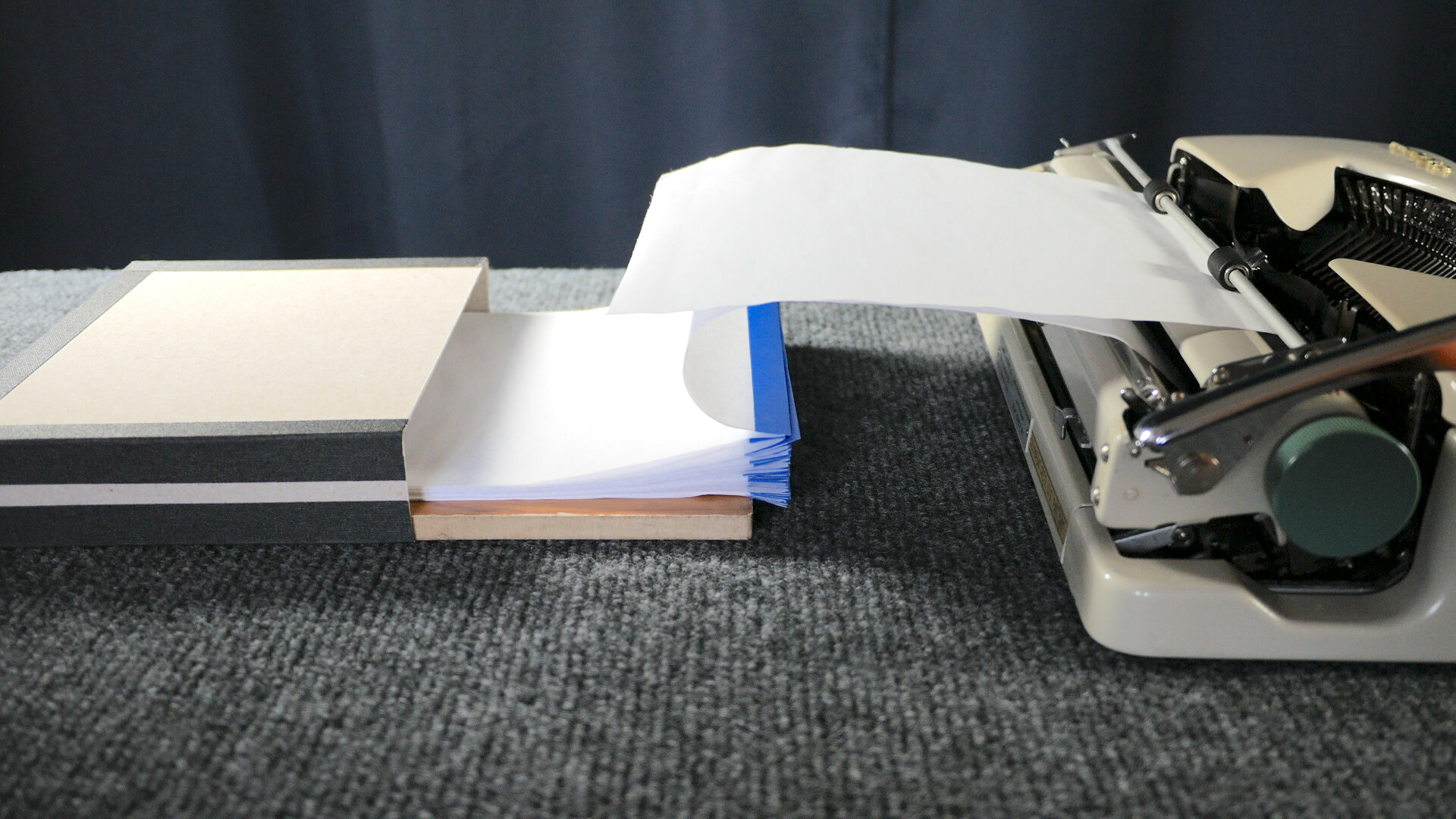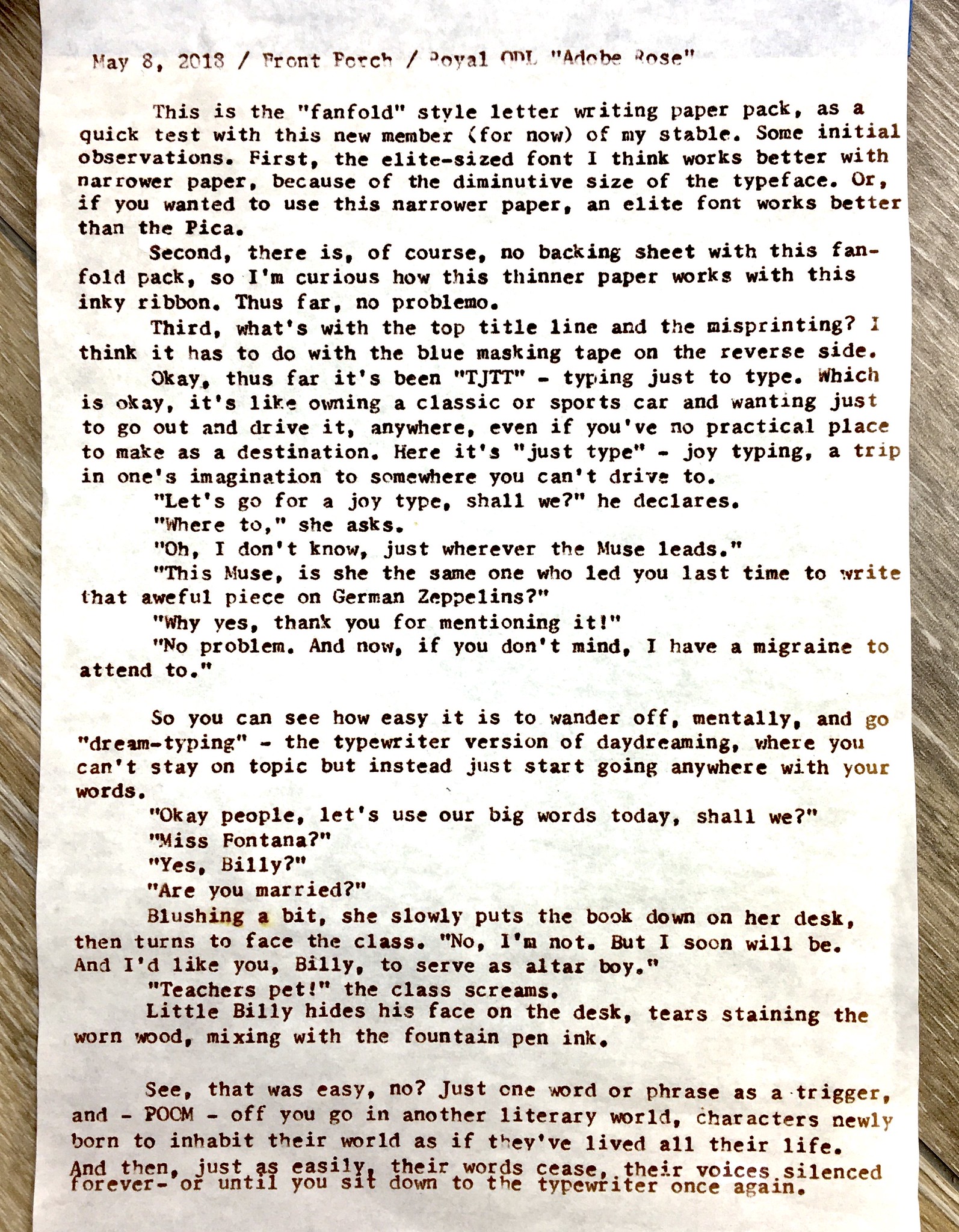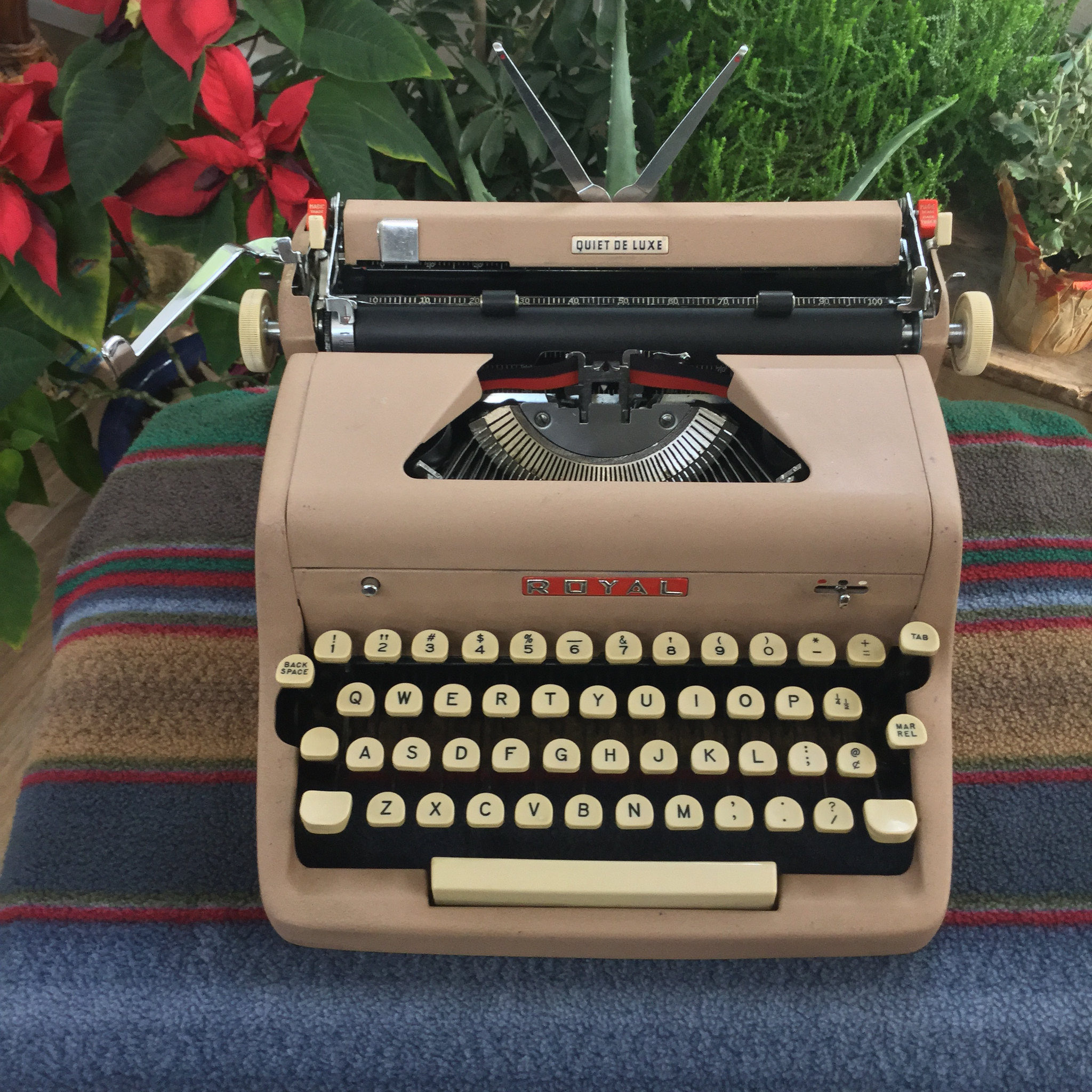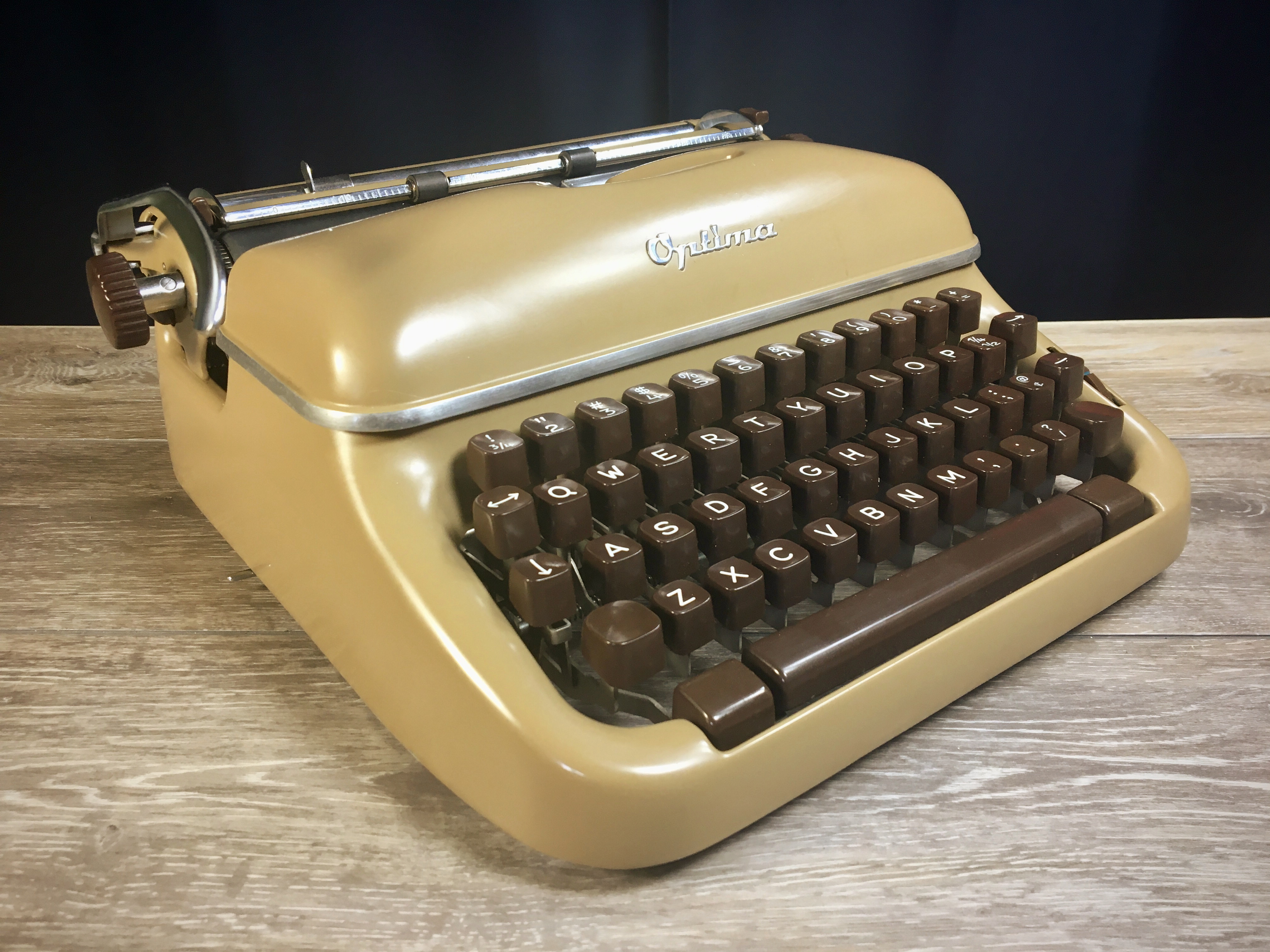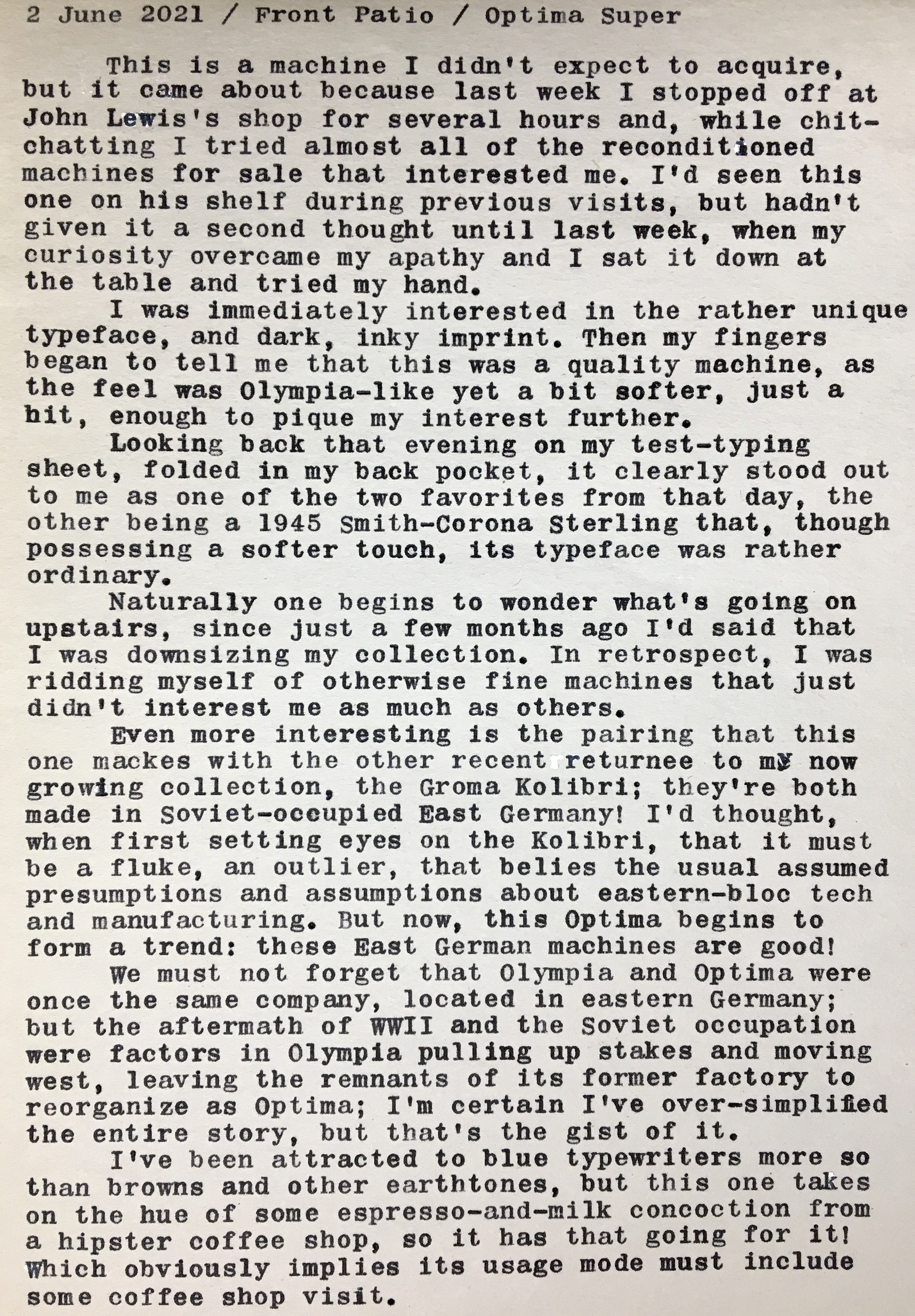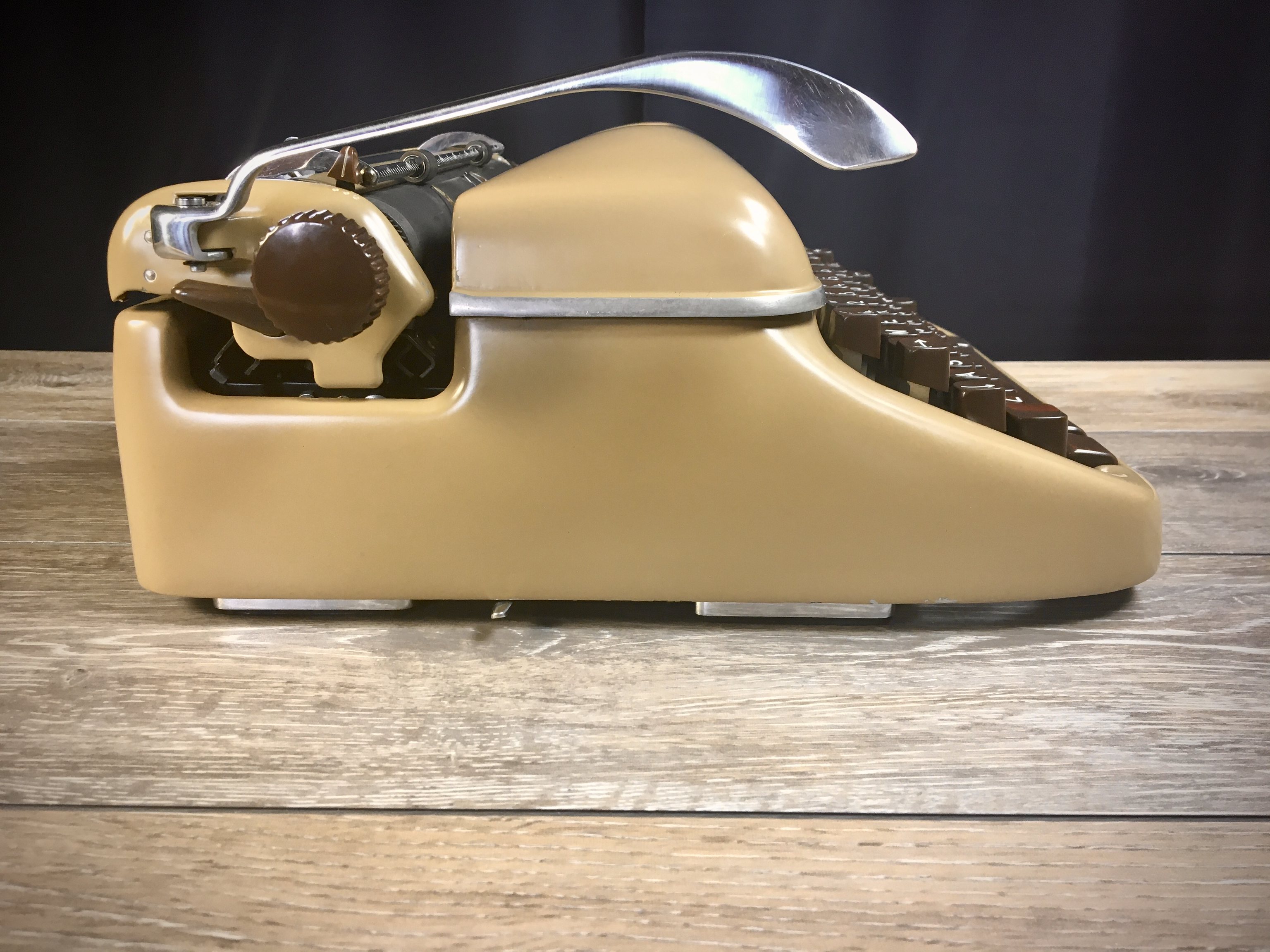
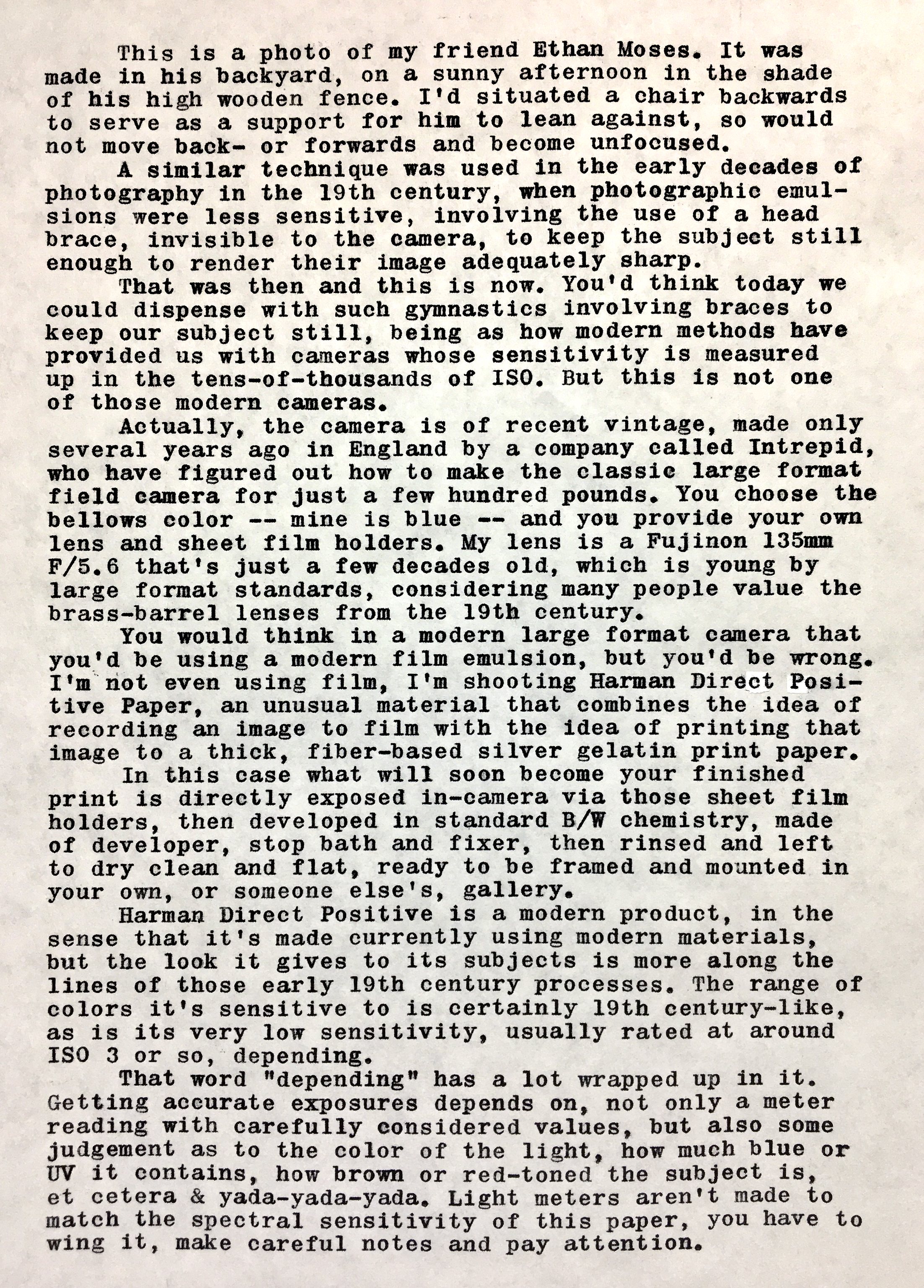 W
What you're seeing is a cellphone snap of the direct positive, 4-by-5-inch format print, slightly cropped. The tone of the print isn't exactly like what it looks like in person, but pretty close. The fiber paper has a particular sheen and subtle orangepeel-like texture that makes rendering shadow detail a bit tricky with digital cameras or scanners. I find this not as much of a problem as a
feature built-in to the process of creating direct positive prints, that have to be seen in person to be appreciated.
The paper is also very high-contrast; a fill-in reflector should have been employed for the shadows. And the highlights on his arm are a bit over-exposed, with his yellow shirt appearing almost solarized. Such are the challenges of this medium. But the rewards are a finished, wet print in under ten minutes, out in the field.
When we opened the developing tank and took a peek inside, we were immediately amazed at the sharp, crisp tones of the positive image staring back at us. These kinds of processes never cease to amaze me, it still seems like magic.
There's another aspect to the making of this particular portrait. It was intended as a mere test, nothing more. No "fine art" implied. I've made many exposures on this paper, enough to be pretty confident about 1/2 second at F/5.6 would render a pretty decent exposure in shaded daylight. I also knew this because the last time I used the Fujinon lens on my Intrepid camera was with the same paper under similar conditions, and the shutter was still set to 1/2 second. Also, my light meter was still set to ISO 3. All these variables were under sufficient control for me to have confidence that I would get
something at least. So the exposures were not what we were testing.
I say "we" because this is as much Ethan's project as mine; more his than mine, really. It had been a heady day of rapid design and prototyping, and at this date still premature to say too much more about this project. The idea is a new way to develop these prints out in the field. There were many unexpected technical hurdles to overcome, and we're still in the testing phase, but you'll soon hear updates here and on my YouTube channel, and also on Ethan's social media.
If you're curious about working with Harman Direct Positive Paper, here are a few links to get you started:
Joe's videos about using Harman Direct Positive Paper:
Indoor Direct Positive Prints:
https://youtu.be/x7zsvpUNpJs
Minimalist Direct Positive Prints:
https://youtu.be/UsVZ0tj7xj8
Accurate Exposures with Harman Direct Positive Paper, Part One:
https://youtu.be/saMZOrdvILc
Accurate Exposures with Harman Direct Positive Paper, Part Two:
https://youtu.be/OM-e_ULgRUU
Comparison: Direct Positive Versus Contact Prints:
https://youtu.be/pQ-1MibtbkQ
Paper Pinhole Processing in the Field:
https://youtu.be/yEAlfYXgfqQ
Caffenol & Harman Direct Positive Paper:
https://youtu.be/suGpmWiriZo
Field-Drying Harman Direct Positive Prints:
https://youtu.be/DYEzpUvZEhs
Where to buy Harman Direct Positive Paper:
Freestyle Photo:
https://www.freestylephoto.biz/1171158-Ilford-Direct-Positive-Paper-FB-F1K-Glossy-4x5-25-Sheets
B & H Photo:
https://www.bhphotovideo.com/c/product/756607-REG/Ilford_1165258_Harman_Direct_Positive_Fiber.html
Typecast via
Optima Super.
Labels: Ethan Moses, Harman DPP, Intrepid 4x5
